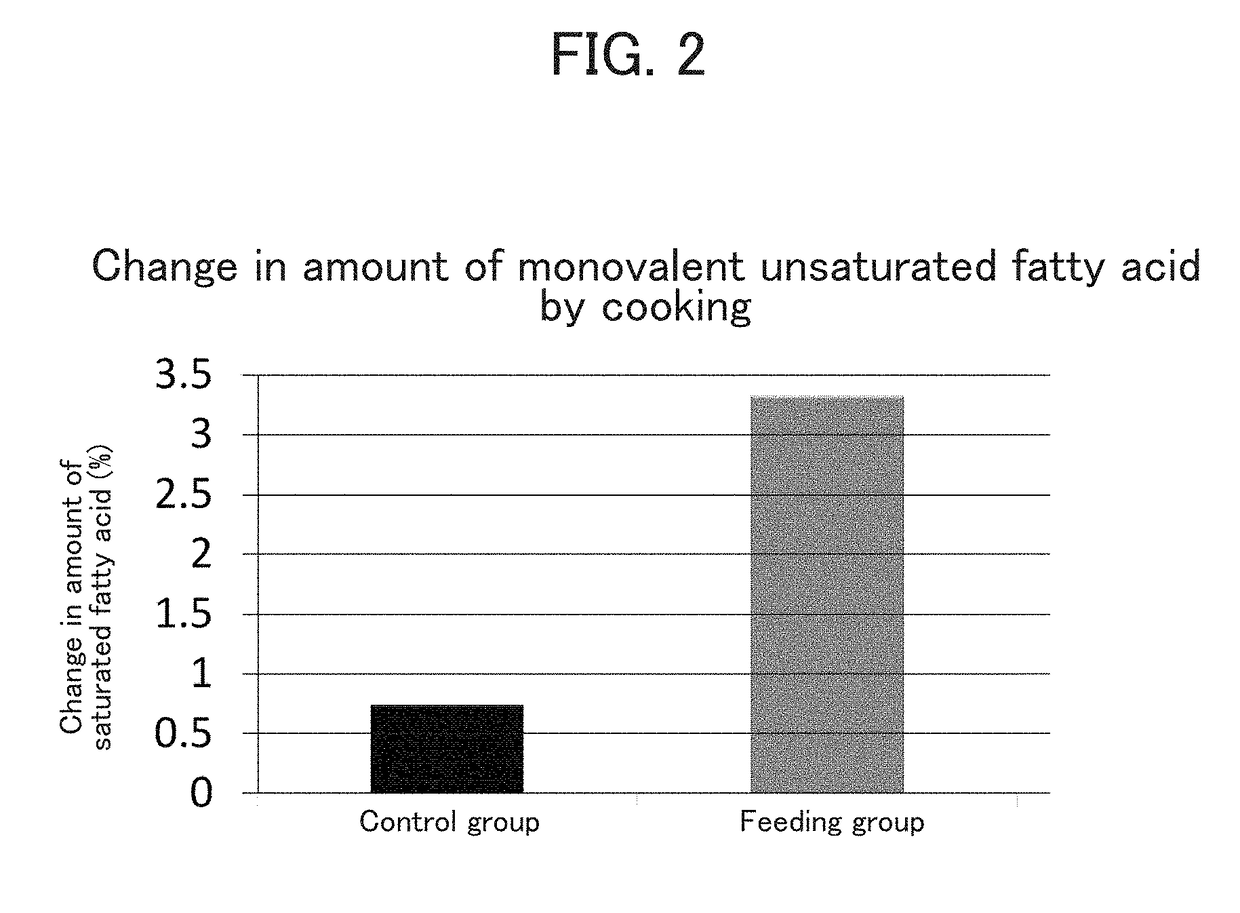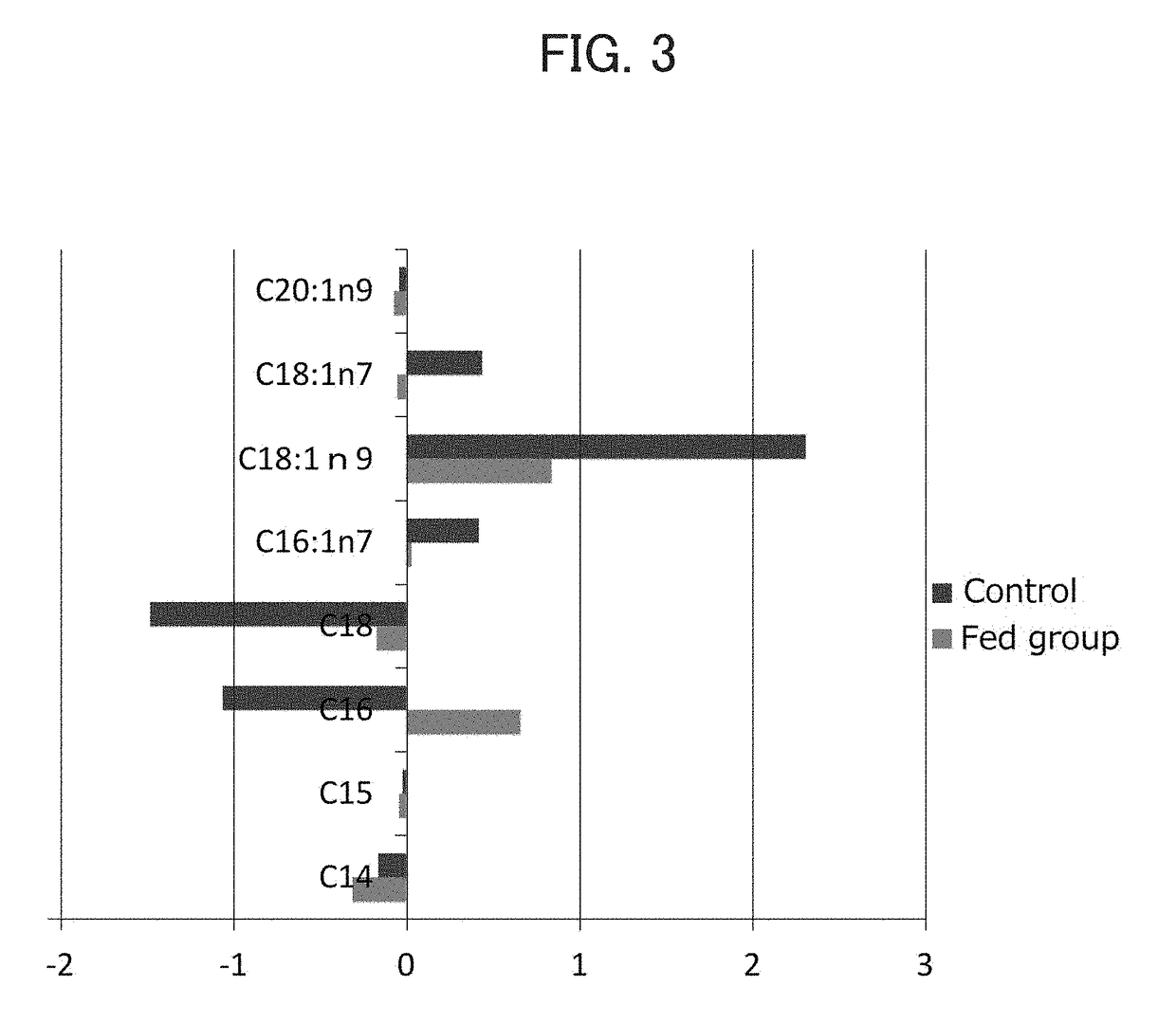Method for producing meat capable of reducing saturated fatty acid intake
- Summary
- Abstract
- Description
- Claims
- Application Information
AI Technical Summary
Benefits of technology
Problems solved by technology
Method used
Image
Examples
example 1
Lactobacillus plantarum BB-PLT (Lactic Acid Bacterium BB-PLT Strain)
[0034]Lactobacillus plantarum BB-PLT (lactic acid bacterium BB-PLT strain) was isolated from the silage of Obihiro-city, Hokkaido, Japan. The lactic acid bacterium BB-PLT strain was deposited under deposition No. NITE BP-02097 (deposition date: Aug. 10, 2015) with National Institute for Technology and Evaluation (NITE) Patent Microorganisms Depositary (NPMD) (2-5-8, Kazusakamatari, Kisarazu-city, Chiba, Japan).
[0035]The mycological properties of the Lactobacillus plantarum BB-PLT (lactic acid bacterium BB-PLT strain) cultured using a MRS broth (manufactured by Oxoid SA) are as described below. As for sugar utilization, the culture was performed using a basal medium for carbohydrate fermentation tests (distilled water was added to 10.0 g of tryptone, 5.0 g of yeast extracts, and 0.06 g of bromocresol purple to adjust the total amount to 1000 ml, followed by pH adjustment to 6.8 and subsequent high-pressure sterilizat...
example 2
Preparation of Lactic Acid Bacterium BB-PLT Strain Probiotic
[0050]The bacterium was inoculated to a MRS liquid medium and primarily cultured at 25 to 35° C. for 24 hours. The culture solution was sprayed over sterilized bran and secondarily cultured at 25 to 35° C. for 3 days to obtain a lactic acid bacterium probiotic. The number of the bacterium contained in the obtained lactic acid bacterium probiotic was 3.0×109 CFU / g.
example 3
Change in Fatty Acid Composition of Cattle by Feeding with Lactic Acid Bacterium Probiotic
[0051](1) Feeding of Cattle with Lactic Acid Bacterium Probiotic and Sampling
[0052]Male fatten Limousin cattle (12 animals per group) were used. A lactic acid bacterium administration group was fed everyday with 20 g / day / animal of the lactic acid bacterium formulation as a mixture with ordinary feed. Immediately after slaughter, longissimus thoracis muscle at the 7th thoracic vertebrae was collected. The collected raw meat was vacuum-packed and transported in a refrigerated state of 5° C. or lower. For fatty acid composition analysis, unnecessary portions were removed, and the resultant was sliced as thin as possible perpendicularly to the muscle fiber orientation. The slices were cryopreserved at −30° C. until the analysis. The fatty acid composition analysis was conducted within 10 days after the start of the cryopreservation.
[0053](2) Heat Treatment
[0054]Approximately 50 g of the sample was ...
PUM
 Login to View More
Login to View More Abstract
Description
Claims
Application Information
 Login to View More
Login to View More - R&D
- Intellectual Property
- Life Sciences
- Materials
- Tech Scout
- Unparalleled Data Quality
- Higher Quality Content
- 60% Fewer Hallucinations
Browse by: Latest US Patents, China's latest patents, Technical Efficacy Thesaurus, Application Domain, Technology Topic, Popular Technical Reports.
© 2025 PatSnap. All rights reserved.Legal|Privacy policy|Modern Slavery Act Transparency Statement|Sitemap|About US| Contact US: help@patsnap.com



